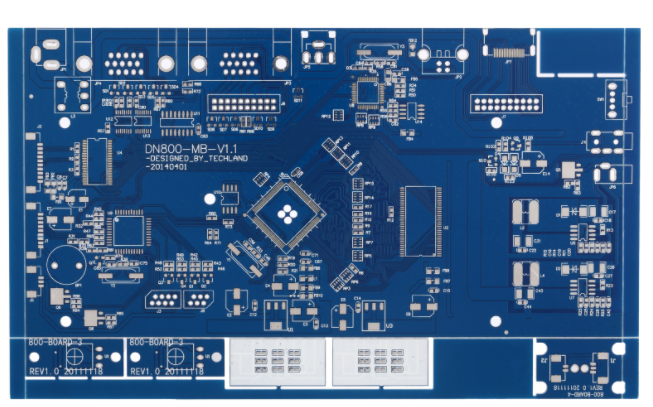PCB overview and application
The inventor of the printed circuit board was Paul Eisler, an Austrian, who used a printed circuit board in a radio device in 1936. In 1943, the Americans used this technology extensively in military radios. In 1948, the United States officially recognized this invention for commercial use. Since the mid-1950s, printed circuit board technology has only begun to be widely adopted.
PCB is the abbreviation of Printed Circuit Board in English (Printed Circuit Board). Generally, the conductive pattern made of printed circuits, printed elements or a combination of the two on the insulating material according to a predetermined design is called a printed circuit. The conductive pattern that provides electrical connections between components on an insulating substrate is called a printed circuit. In this way, the printed circuit or the finished board of the printed circuit is called a printed circuit board, also called a printed circuit board or a printed circuit board. Circuit boards can be divided into the following categories according to their functions: single-sided circuit boards, double-sided circuit boards, aluminum-based circuit boards, impedance circuit boards, FPC flexible circuit boards, and so on.

The raw materials of the circuit board are divided into: glass fiber, CEM-1\CEM3\FR4, etc. We can see this material in our daily life. For example, the core of fireproof cloth and fireproof felt is glass fiber, which is easy to combine with resin., We dipped the tightly structured and high-strength glass fiber cloth into the resin, and hardened it to obtain a heat-insulating, non-bending PCB substrate-if the PCB board is broken, the edges are white and layered, which is enough to prove that the material is resin glassfiber.
The types of circuit boards are divided:
1. Divided by process: Immersion gold (chemical gold), electro-gold, anti-oxidation (OSP, coated rosin), spray tin (leaded, lead-free), carbon oil board, printed blue glue.
2. Divided by the number of layers: single-sided, double-sided, four-layer, six-layer, eight-layer, and ten-layer. . . . .
3. Divided by material: FR4 fiberglass board (epoxy resin board), aluminum substrate, paper board (94V0, 94HB, 22F, CEM-1,,,,,), FPC flexible circuit board, copper substrate, iron substrate, Ceramic plate.
4. According to ink color: green oil (photographic oil, matte oil), white oil, red oil, blue oil, black oil (photographic oil, matte oil), butter
5. According to the thickness of the board: 0.4MM, 0.6MM, 0.8MM, 1.0MM, 1.2MM, 1.6MM, 2.0MM. . . . . .
6. According to copper thickness, 0.5 ounces (OZ), 1 ounces (OZ), 2 ounces (OZ)
Circuit board application
Cars, electronics, security, military, audio, LED, access control, motherboards, vehicles, controllers, and other live equipment.
Attached:
Mil (mil): The unit of length commonly used in the United States. Commonly known as point in the United States.
1. n. thousandths of an inch
[meter] mils (=0.001 inch, unit of wire diameter)
1mil=1/1000inch=0.00254cm=0.0254mm
1inch=1000mil=2.54cm=25.4mm1mm=39.37mil
IC (Immersive Gold) Board: The gold thickness is generally 0.03-0.05uinch
The thickness of the gold plating of the whole board is generally 0.05-2uinch
Gold finger gold thickness is generally 5uinch (microinch)